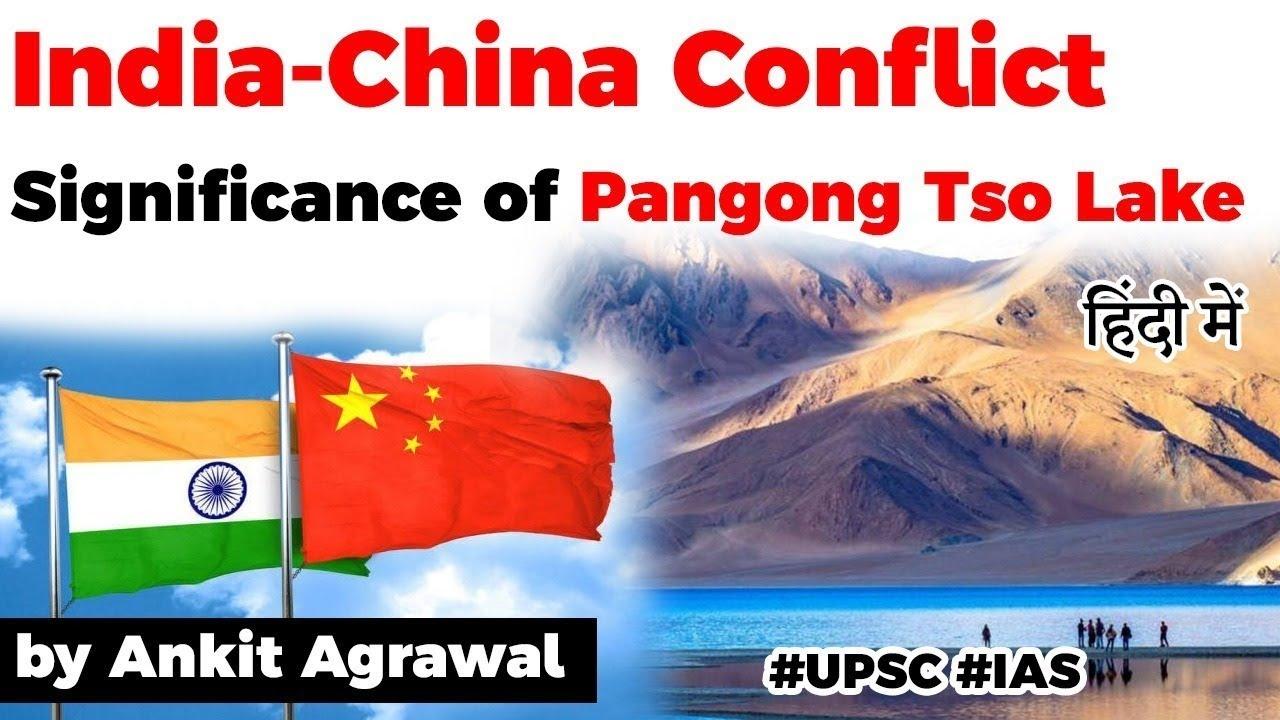Table of Contents

PANGONG TSO
- Pangong Tso is a long narrow, deep, endorheic (landlocked) lake situated at a height of more than 14,000 ft in the Ladakh Himalayas.
- The 135 km-long lake sprawls over 604 sq km in the shape of a boomerang, and is 6 km wide at its broadest point.
- The brackish water lake freezes over in winter, and becomes ideal for ice skating and polo.
TACTICAL SIGNIFICANCE OF THE LAKE
- Indian assessments show that a major Chinese offensive, if it comes, will flow across both the north and south of the lake.
- During the 1962 war, this was where China launched its main offensive —
- The Indian Army fought heroically at Rezang La, where the Ahir Company of 13 Kumaon led by Maj. Shaitan Singh made its last stand.
CONNECTIVITY IN THE REGION
- Over the years, the Chinese have built motorable roads along their banks of the Pangong Tso.
- In 1999, when the Army unit from the area was moved to Kargil for Operation Vijay, China took the opportunity to build 5 km of road inside Indian territory along the lake’s bank.
- It points to the importance accorded by the Chinese to the area.
FINGERS IN THE LAKE
- The barren mountains on the lake’s northern bank, called the
- Chang Chenmo, which the Army calls “fingers”.
- India claims that the LAC is coterminous with Finger 8, but it physically controls area only up to Finger 4.
- Chinese border posts are at Finger 8, while it believes that the LAC passes through Finger 2.

- Around six years ago, the Chinese had attempted a permanent construction at Finger 4 which was demolished after Indians strongly objected to it.
- The fracas between Indian and Chinese soldiers earlier this month happened in this general area at Finger 5, which led to a “disengagement” between the two sides.
- The Chinese have now stopped the Indian soldiers moving beyond Finger 2. This is an eyeball-to-eyeball situation which is still developing.
CONFRONTATION ON THE WATER
- On the water, the Chinese had a major advantage until a few years ago —
- Their superior boats could literally run circles around the Indian boats.
- But India purchased better Tampa boats some eight years ago, leading to a quicker and more aggressive response.

- After a boat from the other side is spotted moving into own waters, an equal number of boats are despatched to confront the intruders.
- The boats stop about 20 feet apart, and both sides unfurl the banners.
- But what happens if one of the Chinese boats suddenly start making an aggressive move, like trying to get into Indian waters?
- An Indian boat then tails it, first giving it a chase and then circling it with high speeds.
- Called a “whirlpool,” this tactical manoeuvre traps the aggressor boat in high currents, forcing it to return as it begins to dip into an eddy.
WHEN YOU TRAVEL FROM LEH TO PANGONG PSO LAKE, WHICH PASS YOU’LL CROSS?

Latest Burning Issues | Free PDF






















 WhatsApp
WhatsApp